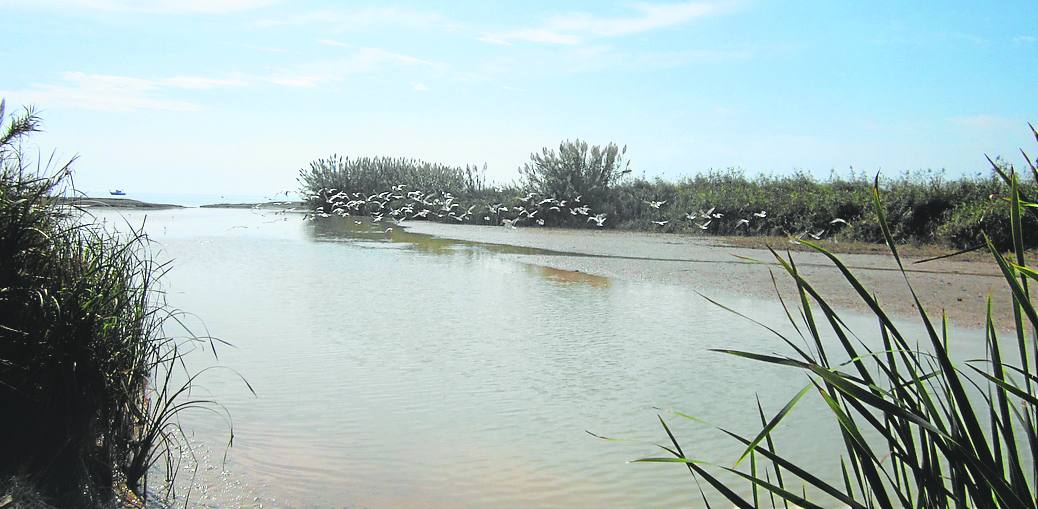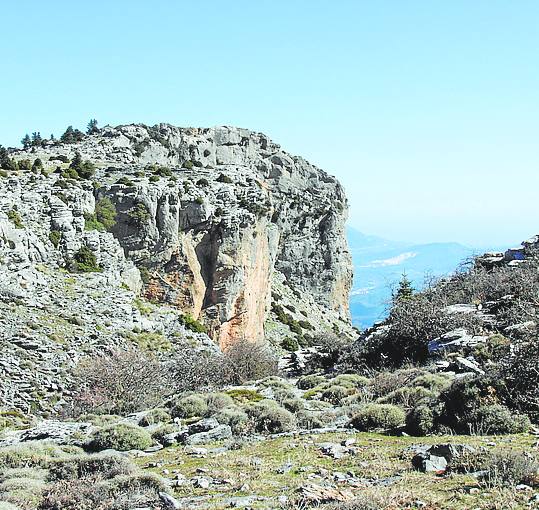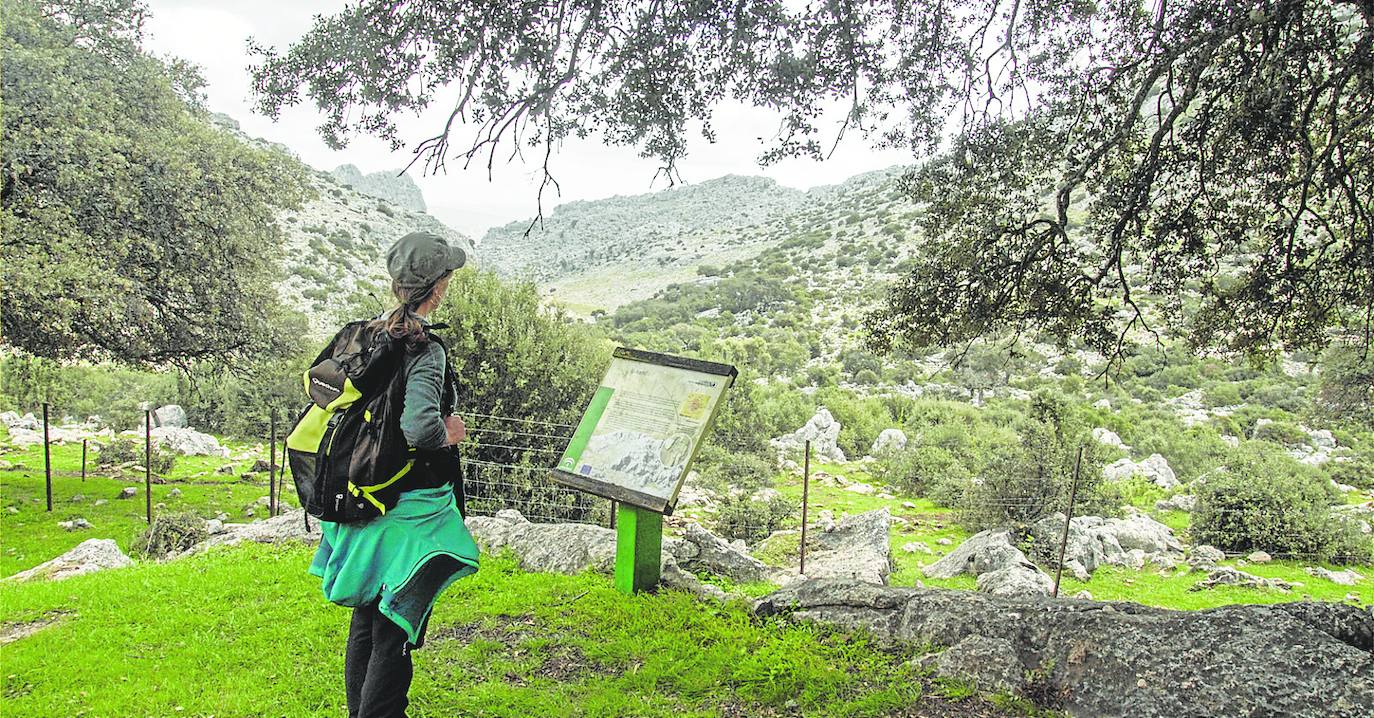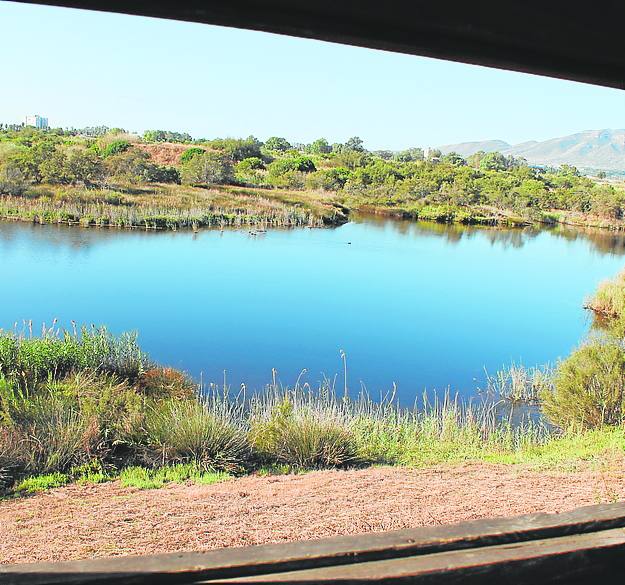

Sections
Highlight

Javier Almellones
Malaga
Monday, 18 December 2023, 09:34
The province of Malaga is a real paradise for birdwatchers. Thanks to its location in a passageway for different migratory birds and the great variety of ecosystems in its diverse territory, today it is one of the best areas for sightings of different species, from the Eurasian griffon vulture to the white-headed duck or the greater flamingo.
At present, thanks to Birding Málaga, which is the Diputación provincial authority’s platform which promotes birding tourism in the province, there are many places and observatories set up to see some of the most unique species that inhabit the province or pass through it. Here are some of the most accessible spots (one per district).
Calaburras lighthouse
In the coastal area of Mijas, a headland is one of the best known places for birdwatching on the Costa del Sol. It is in a strategic location, as the bays of Malaga and Marbella are divided by this headland. It is an ideal place to observe seabirds, both in periods of passage and wintering, as well as migratory birds of prey on their way to Africa. In addition, as Birding Málaga points out, it is one of the few places in the province where the purple sandpiper can be seen. Other frequent species during the colder months are the common ringed plover, the ruddy turnstone, the common whimbrel and the common scoter, among others.
River Vélez delta
Between the beaches of Torre del Mar and Almayate, the River Vélez flows into the sea, forming a stretch which has become an ideal place to observe interesting birdlife such as ducks, little grebes, shearwaters, cormorants, herons (including the purple heron), coots and moorhens. Flamingos, different types of birds of prey, crakes, nightjars, swifts, hoopoes and bee-eaters, among others, have also been seen. Birding Málaga especially highlights the waders, generally linked to wetlands and known for their long migrations, as the mouth of the River Velez is possibly the best place in the province to see them. During certain periods in autumn or spring, up to 20 different species can be seen in the area. It can be reached by a comfortable walk from Torre del Mar.

Tajo de la Caína
It is not a relatively accessible site, but being on one of the best-known routes in the Sierra de las Nieves National Park, it is ideal for hikers who enjoy bird watching. In particular the Eurasian crag martin, which typically lives in the vertiginous rocky crags of this area, stands out here. However, you must approach these cliffs with great care and caution. Furthermore, the short-toed snake eagle, the common cuckoo, the sparrowhawk and the European scops owl, among other birds, have been spotted in this area located next to the spectacular pinsapar de Yunquera and with views of the summit of La Torrecilla, according to Birding Málaga. This spot is only accessible by the hiking route that starts from the Luis Ceballos viewpoint.

Llanos de Líbar
In the far northwest of the province of Malaga, between the territories of Montejaque, Benaoján and Cortes de la Frontera is the spectacular high plateau known as the Llanos de Líbar. As well as being an ideal place to enjoy the most unique geology and even see mammals of a certain size, it is also one of the sites recommended by Birding Málaga for birdwatching. Specifically, during the breeding season you can observe the three species of wheatears (black, grey and blond) as well as two species of rock thrushes that nest in Europe (blue and common), as well as western Orphean warblers, eastern subalpine warblers, Dartford warblers, sardinian warblers, and spectacled warblers . In addition, griffon vultures are often seen here.
Recommended hiking route: Sendero de los Llanos de Líbar.

Peñarrubia observatory
This is one of the best places to observe the great carrion-eaters that live in the inland of Malaga province. On the road between Campillos and Teba, this stone hut is easily accessible and has information panels. In addition to the vulture, you can also see Bonelli’s eagle, the sardinian warbler and the blue rock thrush, among other species. It should be noted that this is one of the milestones on stage 19 of the Great Trail (Gran Senda) of Malaga, Campillos and Guadalhorce reservoirs.
Gaitanes gorge
The most spectacular gorge in Malaga province not only has the attraction of being able to walk along the famous Caminito del Rey, but it is also a great place to observe different types of birds. Among them the crag martin, the rock dove, the blue rock thrush and the black wheatear can be seen here. In addition, there are Eurasian griffon vultures, Bonelli’s eagles, peregrine falcons, common kestrels, Alpine swifts and red-billed choughs. Those who walk along the restored footbridge of the Caminito or take the MA-5403 road, from Ardales to the village of El Chorro, will have the opportunity to stop and observe some of the bird species mentioned.
El Torcal
This spectacular labyrinth of stones attracts thousands of visitors every year due to its unique karstic geology, which, due to the effects of erosion, has created very unique rock shapes, resembling objects or animals. However, one of the great assets of this natural site is also its fauna. Specifically, as far as birds are concerned, you can see the flight of numerous birds of prey, such as the booted eagle, the golden eagle, the peregrine falcon, the black kite, the common kestrel and the Eurasian sparrowhawk. You can also see the most common scavenger in the province, the majestic Eurasian griffon vulture
Hoz del Arroyo Marín
From Archidona town centre you can take a pleasant walk to enjoy a wide variety of birdlife in the nearby Marín stream. In what is known as La Hoz (gorge) and its surroundings there are up to four very different habitats. On the one hand, there is the woodland, with thick pine forests on both sides of the valley. There is also the steppe, with the surrounding olive groves, where birds typical of these ecosystems can be seen. A third habitat is the riverside habitat, in the riverbed and on the banks of the stream. We can also add the rocky habitat to the list, in the limestone crags that make up the steepest face of the gorge. In addition to the varied flora, numerous birds has been seen in this valley, including the Bonelli’s eagle, the Eurasian eagle-owl, the goshawk and the Iberian magpie.
The mouth of the Guadalhorce
The greater flamingo, the white-headed duck and the cormorant are some of the species that, with some luck, but always with stealth, can be seen in one of the most important natural sites in Andalucía, which is located on the western side of the city of Malaga. The Desembocadura del Guadalhorce is today one of the great ornithological temples of Europe.
There are several wooden hides where you can wait patiently and silently for some of the species that inhabit it or pass through, as it is one of the strategic points to see migratory birds. Today there are several easy hiking trails that allow you to walk around it.

In addition, in 2020 a wooden bridge was built which allows you to cross the river and which forms part of the itineraries of the Gran Senda de Málaga and the Senda Litoral.
Publicidad
Publicidad
Publicidad
Publicidad
Esta funcionalidad es exclusiva para registrados.
Reporta un error en esta noticia

Debido a un error no hemos podido dar de alta tu suscripción.
Por favor, ponte en contacto con Atención al Cliente.

¡Bienvenido a SURINENGLISH!

Tu suscripción con Google se ha realizado correctamente, pero ya tenías otra suscripción activa en SURINENGLISH.
Déjanos tus datos y nos pondremos en contacto contigo para analizar tu caso

¡Tu suscripción con Google se ha realizado correctamente!
La compra se ha asociado al siguiente email
Comentar es una ventaja exclusiva para registrados
¿Ya eres registrado?
Inicia sesiónNecesitas ser suscriptor para poder votar.